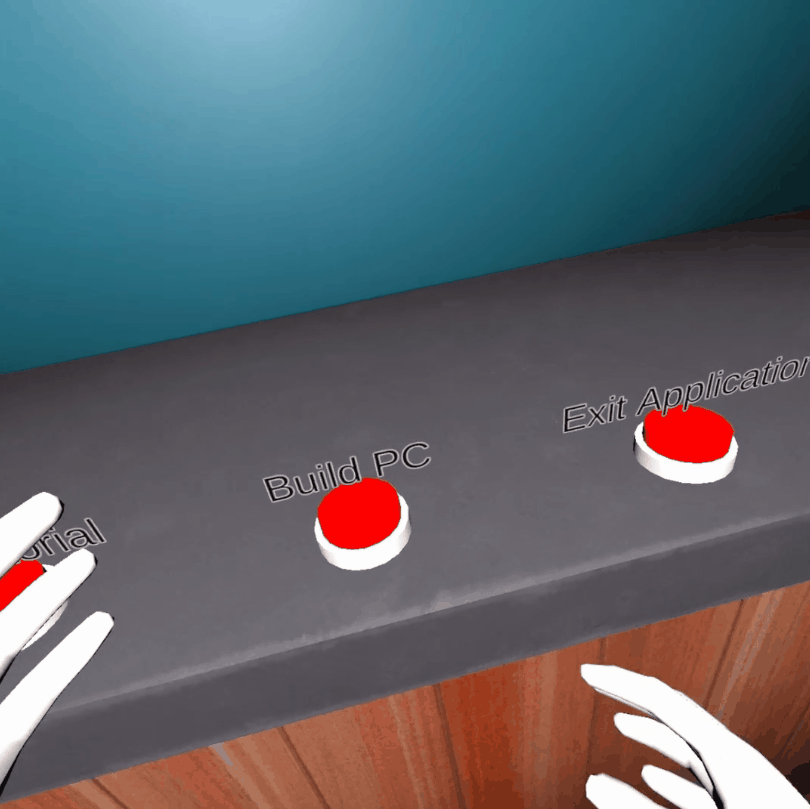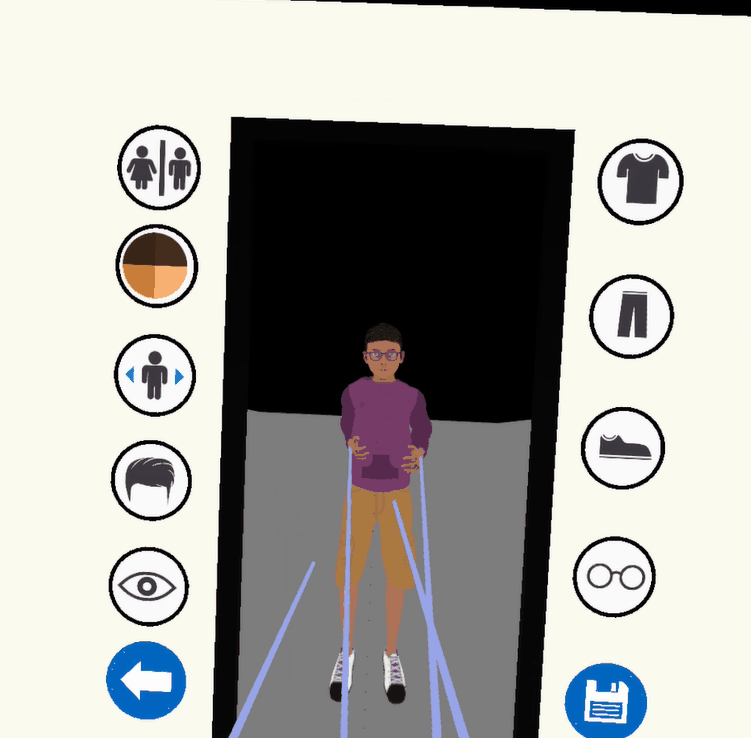Home
Virtual Reality Research Projects
Using VR to improve lives
Hope Training Academy (HTA)
 At my most recent
research opportunity, our team worked with HTA to create VR lessons on how to
assemble a computer. As the lead developer, I was tasked with creating the interactions between the
different PC parts. I created a system that allowed for multiple PC parts to be encased in each other
while adding the ability to include/exclude certain parts if desired. The research focused on
recreating a preexisting lesson that HTA had a web based alternative to, and compare the experiences
of people who participated in either the VR or web based experience. While our research only required
a small amount of PC parts, our team had a simulation that included most major parts on high end
gaming computers. In the hopes we would received more funding to continue the project, I built our
system to be modular so that it could be easily expanded on in the future. It was the first time I had led
such a large team for more that just a game jam, and I am very proud with what our team was able to put
together in our time working together. If you are interested in more details about the project, you can
check out this
article or browse HTA's website to find
more information on their projects.
At my most recent
research opportunity, our team worked with HTA to create VR lessons on how to
assemble a computer. As the lead developer, I was tasked with creating the interactions between the
different PC parts. I created a system that allowed for multiple PC parts to be encased in each other
while adding the ability to include/exclude certain parts if desired. The research focused on
recreating a preexisting lesson that HTA had a web based alternative to, and compare the experiences
of people who participated in either the VR or web based experience. While our research only required
a small amount of PC parts, our team had a simulation that included most major parts on high end
gaming computers. In the hopes we would received more funding to continue the project, I built our
system to be modular so that it could be easily expanded on in the future. It was the first time I had led
such a large team for more that just a game jam, and I am very proud with what our team was able to put
together in our time working together. If you are interested in more details about the project, you can
check out this
article or browse HTA's website to find
more information on their projects.
Indy VR Study (PerspeckiVR)
 The Indy VR Study was my
first
foray into real Virtual Reality. I had the chance to develop a small app for
the Merge VR Cube for my first game jam, but the limitations that 3 degrees of freedom movement provides
didn't wow me much. It wasn't until a few years later, when I was approached by an IUPUI faculty member
about a Unity developer position for VR research that I saw the potential for the technology. Indy VR
Study, or PerspectiVR as the team named it at one point, was a joint collaboration between the IU school of
medicine, and the school of informatics and computing. The study aimed to recreate a scenario in VR
that a psychologist would normally walk through their patient within their head. I was brought on as a
second developer to help the lead keep up with the high workload. It was a great learning opportunity, and
I was even able to create the character customizer that we used in the app. Aside from that, I created an
android sister application that acted as a guide to the VR experience and contained a server for
participants to fill out. The lead developer and I had to synch the two apps together through a Firebase
server. I learned
a lot of lessons about running large scale projects from this research, but most important of all, it
ignited a passion for virtual reality that I hope to continue to grow. If you are interested in more info
here is an
article written on the study.
The Indy VR Study was my
first
foray into real Virtual Reality. I had the chance to develop a small app for
the Merge VR Cube for my first game jam, but the limitations that 3 degrees of freedom movement provides
didn't wow me much. It wasn't until a few years later, when I was approached by an IUPUI faculty member
about a Unity developer position for VR research that I saw the potential for the technology. Indy VR
Study, or PerspectiVR as the team named it at one point, was a joint collaboration between the IU school of
medicine, and the school of informatics and computing. The study aimed to recreate a scenario in VR
that a psychologist would normally walk through their patient within their head. I was brought on as a
second developer to help the lead keep up with the high workload. It was a great learning opportunity, and
I was even able to create the character customizer that we used in the app. Aside from that, I created an
android sister application that acted as a guide to the VR experience and contained a server for
participants to fill out. The lead developer and I had to synch the two apps together through a Firebase
server. I learned
a lot of lessons about running large scale projects from this research, but most important of all, it
ignited a passion for virtual reality that I hope to continue to grow. If you are interested in more info
here is an
article written on the study.